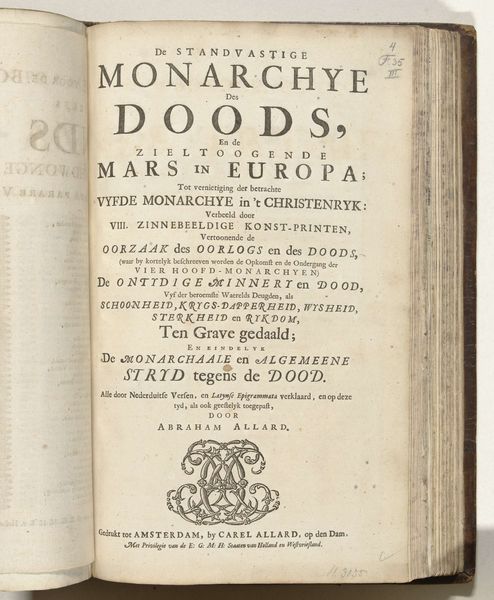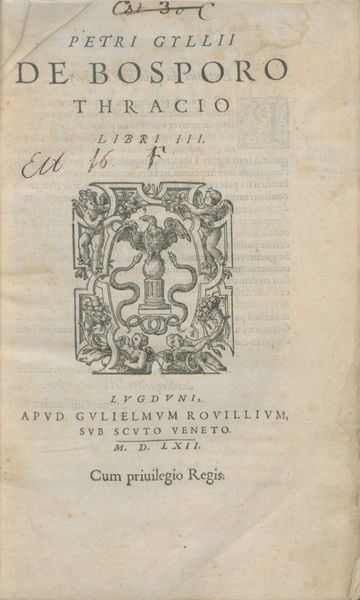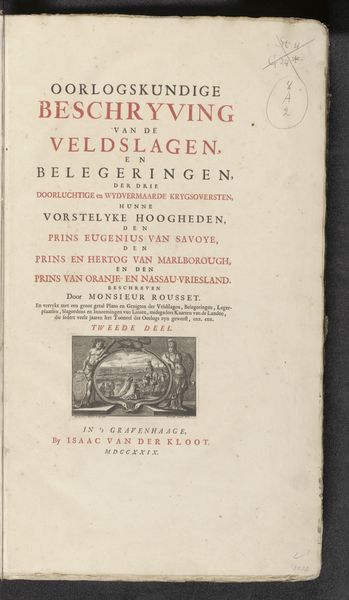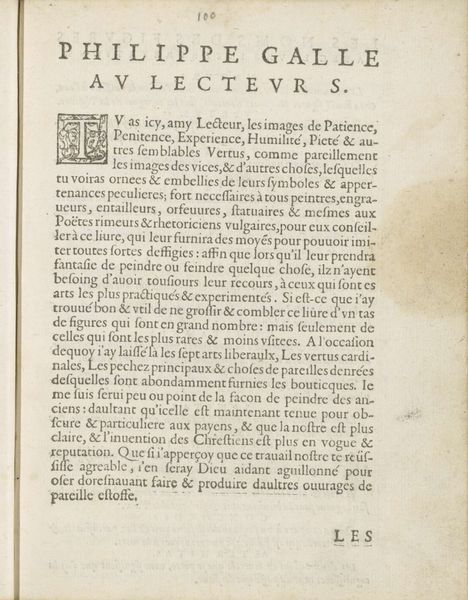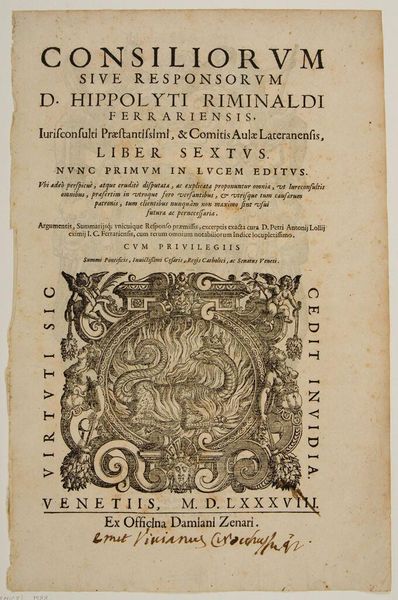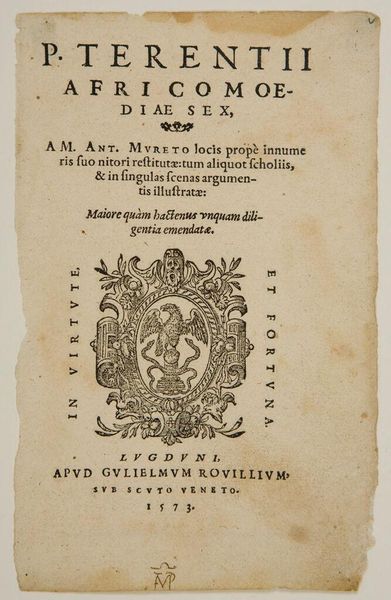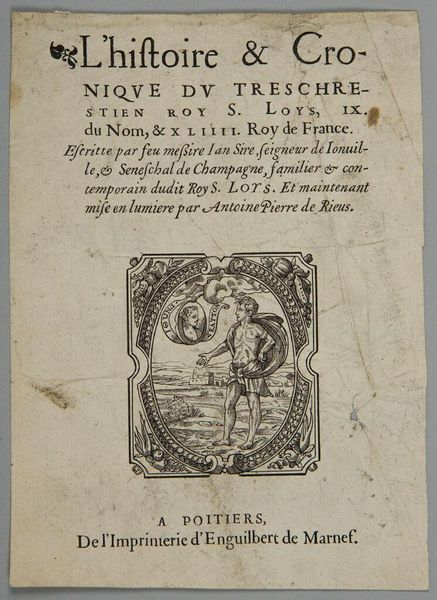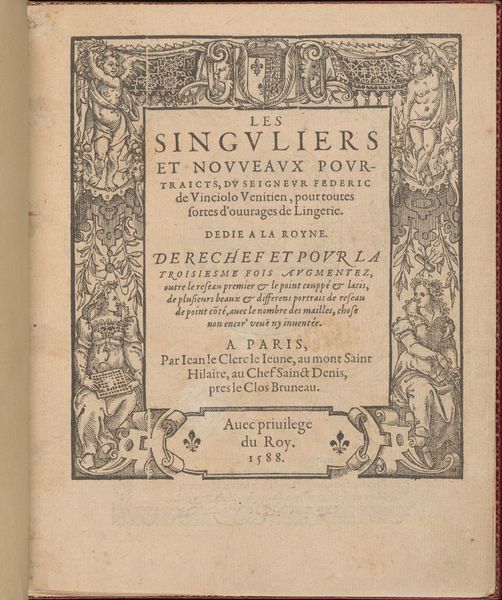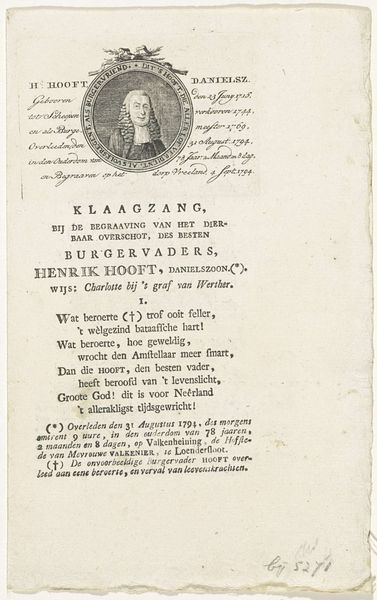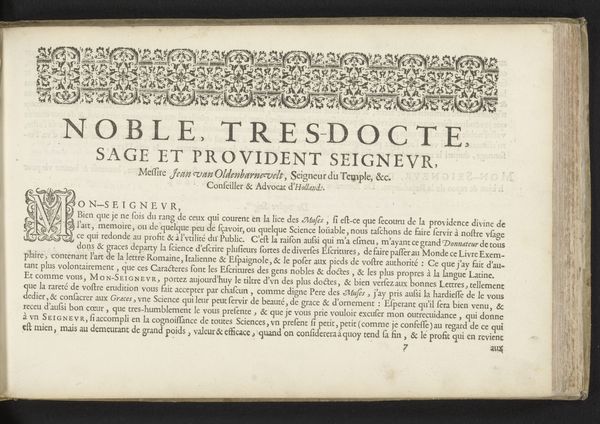
Traité de l'horlogerie, méchanique et pratique, approuvé par l'Academie royale des sciences 1741
0:00
0:00
print, typography, engraving
#
aged paper
#
baroque
# print
#
hand drawn type
#
typography
#
hand-written
#
hand-drawn typeface
#
fading type
#
stylized text
#
thick font
#
history-painting
#
handwritten font
#
engraving
#
historical font
#
columned text
Dimensions: 2 volumes ([26], 400 pages, 50, 41 folded leaves of plates) : illustrations ; Height: 10 1/4 in. (26 cm)
Copyright: Public Domain
Curator: Here we have the engraved title page from "Traité de l'horlogerie, mécanique et pratique, approuvé par l'Académie royale des sciences," published in Paris in 1741. Editor: The page has a somber, aged feel— the typeface is incredibly elaborate, and gives an aura of authority, I must say. Curator: It’s Baroque, wouldn't you agree? There's a definite striving for grandeur and ornamentation here in its visual presentation. What do you notice in the composition? Editor: Definitely, the symmetrical arrangement of text blocks and the ornamental vignette create a strong sense of order and formality, almost like columns. There’s an undeniable intent to project the prestige of both the author, Antoine Thiout, and the Royal Academy. Curator: Precisely. Thiout was a master clockmaker, watchmaker to the Queen Dowager of Spain and other nobility, which speaks volumes about the social status tied to horology at the time. Editor: So this wasn’t just a practical manual; it was making a statement. This isn’t just about instruction; the artistry of the typography communicates a sense of scientific advancement backed by royal approval and tradition. Curator: It indicates how deeply integrated science, art, and power were at the time. Also note that phrase at the bottom - "Avec approbation et privilege du Roy" - This publishing endeavor had royal approval, which was vital. Editor: That context dramatically enriches the viewing experience. Now, the aged paper itself isn't just a background; its texture and color seem almost designed to suggest accumulated wisdom. Curator: Very insightful. The state of preservation lends an interesting depth, doesn't it? It silently attests to its endurance across nearly three centuries. It makes me wonder what it all truly means in this digital age. Editor: It definitely brings a feeling of admiration, knowing it still stands today. Thank you for sharing such context!
Comments
No comments
Be the first to comment and join the conversation on the ultimate creative platform.
